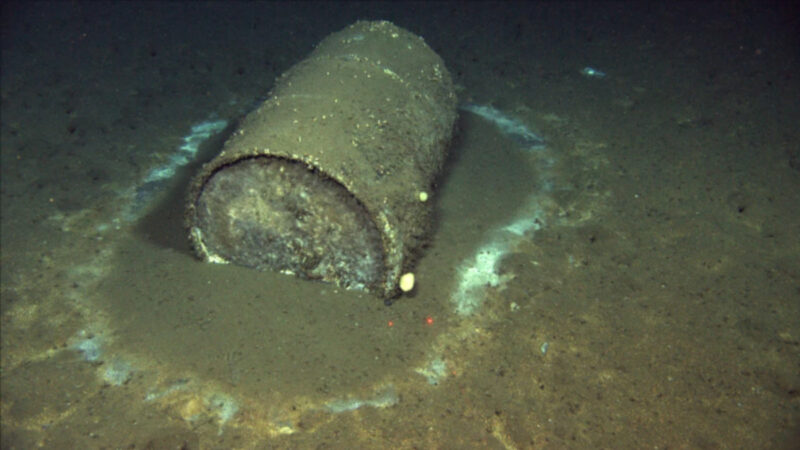Urge California to Take Action on Shameful History of Toxic DDT Dumping in Ocean

Barrel containing industrial toxic waste found off the coast of California. (David Valentine / ROV Jason)
It’s hard to believe that it has been just over a year since the LA Times broke the shocking story of large-scale and widespread dumping of DDT (dichloro-diphenyl-trichloroethane) waste in the deep waters of the San Pedro Basin, off the coast of Southern California, prior to about 1960. The dumping of DDT took place in unceded Tongva, Acjachemen, and Kizh ancestral waters.
The revelation of this extensive, deep-water dumping by UCSB scientist Dr. Valentine and story by LA Times environmental reporter Rosanna Xia horrified even those of us who have worked for decades on the well-known DDT Superfund site in shallower waters off the coast of Los Angeles, in the Palos Verdes shelf. However, this deep-water dumpsite was a lesser-known piece of the toxic legacy of DDT production by the Montrose Chemical Company in Torrance.
DDT, a legacy pesticide, is known to have devastating and long-lasting impacts on wildlife, ecosystems, and human health.
DDT was produced by Montrose from 1943-1983 at their Torrance factory, with much of their DDT-contaminated waste dumped into the sewer system and eventually released in the waters of the Palos Verdes shelf, off the coast of Los Angeles. This created the largest underwater Superfund site in the United States. Stormwater runoff from the factory contaminated the Dominguez Channel and Port of LA too, both of which remain poisoned to this day. And, over the last year we learned that DDT-waste was also taken in barges far offshore and dumped in the deep ocean.
DDT is an especially devastating chemical because it never goes away. It gets into ocean animals and concentrates as it moves up the food chain. It harms untold numbers of fish, marine mammals, and birds, as well as people who rely on fishing to feed themselves and their families.
There are still many questions that need to be answered about the nature and extent of DDT contamination in the deep ocean. We must discover the hard truth about how it continues to poison our ecosystems, including people and marine life.
Since the LA Times article came out, there have been some steps in the right direction but much more needs to be done. Options for removal or mitigation must be explored. The health of people who eat local seafood, especially subsistence fishers, must be protected. Companies that caused the pollution must be held accountable, and government agencies that oversee research and cleanup must be proactive in their work. Above all, the public must be engaged and informed on progress clearly and frequently.
Led by Senators Feinstein and Padilla, the federal government has a proposed earmark of $5.6 million for NOAA, UC Santa Barbara, and Scripps Institution of Oceanography to study the San Pedro Basin deep-water DDT dump site. This is a great start but is not finalized yet and is only about half the amount needed to conduct a comprehensive assessment.
Further, research, mitigation, and cleanup efforts must be approached collaboratively at all levels of government to begin to understand and address this natural disaster as the implications for environmental and public health are far-reaching.
Sign this petition urging Governor Newsom and the California Senate and Assembly to commit, at a minimum, $5.6 M in the 2022-2023 Fiscal Year State budget to match the proposed federal funding allocated to DDT. The State of California permitted this dumping and needs to dedicate resources to tackling this disaster in collaboration with federal agencies.
The following organizations have signed on to this petition:
Heal the Bay
Clean Water Action
Surfrider Los Angeles Chapter
LA Waterkeeper
Surfrider Foundation


